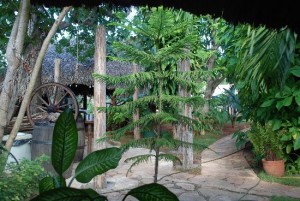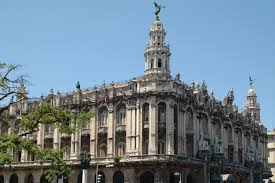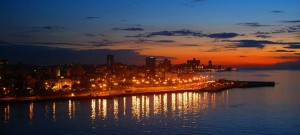 El Malecon Habanero.
El Malecon Habanero.
Strolling along the Malecón (El Malecon) at sunset is a wonderful way to soak up the feel of this evocative city and see some sights along the way. Havana's famous seafront boulevard runs about 7 kilometers from Habana Vieja (Old Havana) to the Vedado and Plaza area. Overlooking the boulevard is a colorful collection of well-preserved 20th-century buildings in a mix of architectural styles, from Art Deco to Neo Moorish. In the golden glow of the setting sun, they make a beautiful photo.
The Malecón is also a great place to meet the locals. Anglers come here to cast their lines, and families and young couples saunter along the seafront enjoying the fresh air and ocean breezes. Those seeking to rest their weary feet should stop by the historic Hotel Nacional de Cuba, a World Heritage Site and a National Monument with a long list of glamorous former guests, including Frank Sinatra, Marlene Dietrich, and Marlon Brando. One of the best places in Havana.
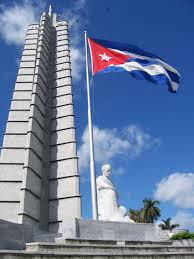 Plaza de la Revolucion (Jose Marti Memorial)
Plaza de la Revolucion (Jose Marti Memorial)
The Plaza de la Revolucion, formerly the Plaza Civica prior to the Revolution, is worth a brief stop due to its historical significance. During a 1998 visit to Cuba, Pope John Paul II celebrated mass in this famous square, and more than a million people have gathered here for Castro's speeches.
Overlooking the square is the Jose Marti Memorial with a 109-meter gray tower and white marble statue of the Cuban national hero. Visitors can browse the small museum here or take the lift up the tower for panoramic city views. Government buildings surround the square, including the Ministry of the Interior building adorned with the iconic image of Che Guevara.
 Museo de la Revolucion.
Museo de la Revolucion.
Housed in a former presidential palace, the Museo de la Revolucion (Museum of the Revolution) is worth seeing even if only from the outside. The old presidential palace was designed by the Belgian architect Paul Belau and was built in the early part of the 20th century in a sumptuous version of neo-Classical architecture. Those who do venture inside are treated to a multitude of displays on Cuba's struggle for independence. Of note are the life-size wax figures of Che Guevara and Camilo Cienfuegos. Behind the museum is an interesting display of the yacht Granma. It was this boat that brought Fidel Castro and his gang to Cuba from Mexico. Also on display is a plane shot down during the ill-fated Bay of Pigs invasion.
 Miramar.
Miramar.
Lying to the west of Havana's historic city center, Miramar has traditionally been an upscale area. Today, it maintains this reputation with the addition of upper-end hotels and restaurants. Sightseers can cruise the wide tree-lined avenues here and admire the stately homes, some of which have become embassies and government offices after the original owners fled during the Revolution. The main street in Miramar is Avenida 5 with its Miami-style Art Deco mansions and grand homes. The Avenues are numbered; Avenida Primera (First Avenue) is closest to the ocean.
Highlights of Miramar, other than the general ambiance of grandeur, are the Acuario Nacional (Aquarium) and the Maqueta de La Havana with a scale model of the city. Also of interest is the Museo del Ministerio del Interior, which details the history of the police force in Cuba, although most displays are only in Spanish.
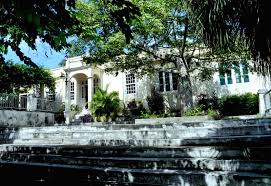 Finca La Vigia, San Francisco de Paula.
Finca La Vigia, San Francisco de Paula.
About 16 kilometers east of Havana in the town of San Francisco de Paula, Finca La Vigia was the part-time residence of Ernest Hemingway for 20 years, between 1939 and 1959 - despite all the turmoil in Cuba during that period.
Upon Hemingway's death, Finca La Vigia was turned into a museum, the Museo Hemingway. The house remains as Hemingway left it with more than 8,000 books on display, as well as artwork, hunting trophies, the author's typewriter, and other personal belongings. Visitors are not allowed inside, but it's possible to peek in through the windows, unless the house is closed up during rainy weather. Visitors can also wander through the garden to see Hemingway's fishing boat, "Pilar," which he had kept in Cojimar. The garden is also home to a pet cemetery, the final resting place for some of his beloved cats.
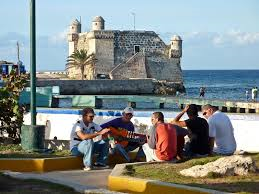 Cojimar
Cojimar
Hemingway fans should make a visit to the small fishing village of Cojimar, about 20 minutes east of Havana by taxi. During the 1950s, Hemingway visited Cojimar often and made it the setting for his novel, The Old Man and the Sea. He also kept his boat the "Pilar" here, and could often be seen socializing with locals in the streets.
These days, tourists come here to visit the square named in his honor and see the statue of the famous scribe. Locals also love to point out his favorite restaurant, La Terraza. Perhaps inspired by Hemingway's legacy, many artists from Havana and other parts of Cuba are drawn here. One of the best places in Havana.
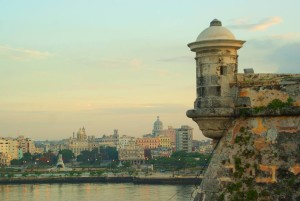 Castillo de los Tres Reyes del Morro.
Castillo de los Tres Reyes del Morro.
Castillo de los Tres Reyes del Morro, also known as El Morro, stands proudly at the entrance of the Bay of Havana in the Parque Historico Militar. El Morro was built in the late 16th century and early 17th century to guard against the constant threat of pirate attacks. It was designed by Italian engineer, Giovanni Battista Antonelli and looks much the same as it did in the 17th century. One of the main changes to the fort is the lighthouse. It was rebuilt several times and then finally replaced in the middle of the 19th century with a new lighthouse constructed of solid stone. Today, its original lamp still shines, and the fort is open to visitors who can enjoy beautiful views over the ocean and the city of Havana from its upper reaches.
 Fortaleza de San Carlos de la Cabana.
Fortaleza de San Carlos de la Cabana.
About a 15-minute walk from El Morro in the Parque Historico Militar, the huge Fortaleza de San Carlos de la Cabana sits atop La Cabana hill. At the time of its construction in the 1770s, it was the largest fort the Spanish had ever built, as well as the most costly. Following the British occupation, the Spanish set about building this imposing fort, which dominates the entrance to the Bay of Havana.
La Cabana, as it is usually referred to, was used as a military prison during the Batista regime and later became the headquarters for Che Guevara following the Revolution. Today, the fort houses a few museums. The most impressive is the Museo de Comandancia del Che, with the office of Che Guevara preserved as it was during his time here. Some of his personal items are also on display. During the day, the fort offers splendid views over the city and the sea. By night, tourists come here for the Ceremonia del Cañonazo when actors clad in 19th-century costumes perform a cannon-firing ceremony at 9pm each evening.
 El Capitolio (National Capitol Building).
El Capitolio (National Capitol Building).
Travelers to Havana who have visited Washington D.C. may do a double take when they see beautiful El Capitolio, inaugurated in 1929. Rising from the city skyline, this grand building displays a blend of Neoclassical and Art Nouveau styles and was the seat of government until 1959, after the Cuban Revolution. But though this grand building is reminiscent of the American Capitol building, it was the Panthéon in Paris that reputedly inspired its distinctive cupola. At the time of writing, it was closed and undergoing a major restoration to prepare it as the new home for Cuba's Communist parliament. However, it remains a striking landmark for those wandering around Havana; its huge dome is visible from almost anywhere in the city.
 Museo Nacional de Bellas Artes.
Museo Nacional de Bellas Artes.
Spread across two buildings, Havana's Museo Nacional de Bellas Artes (National Museum of Fine Arts) is a must-see for art lovers. The restored Palacio del Centro Asturiano, designed in the 1920s by Manuel Bustos, houses Art from European Masters and a collection of more than 600 works of Ancient Art, from the Egyptian to Roman ages.
Dating from 1959, the Rationalist-style Palacio de Bellas Artes building is dedicated to Cuban Art from the 17th century to the present day. Here, visitors can admire an impressive collection of paintings, prints, and sculptures. One of the highlights is the unique marble sculpture "Form, Space and Light" at the museum entrance.
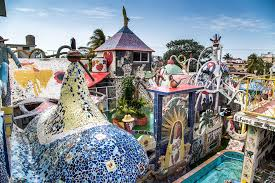 Fusterlandia.
Fusterlandia.

